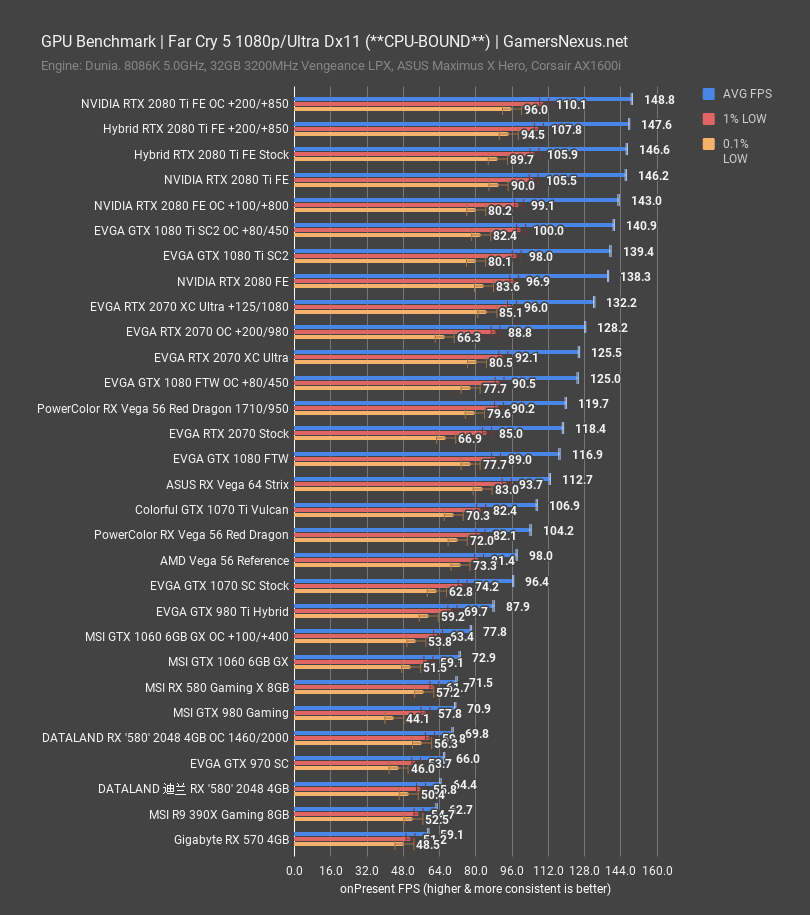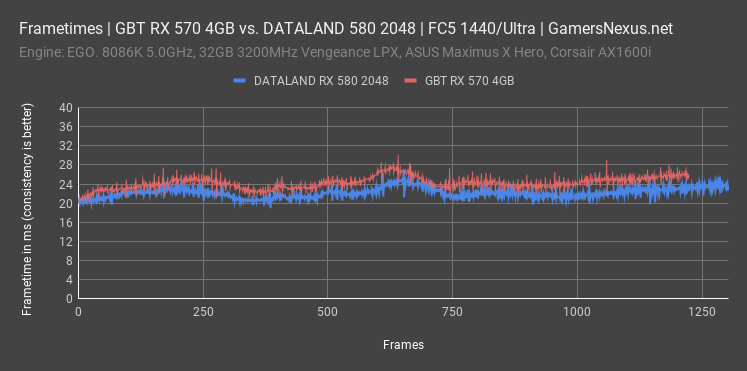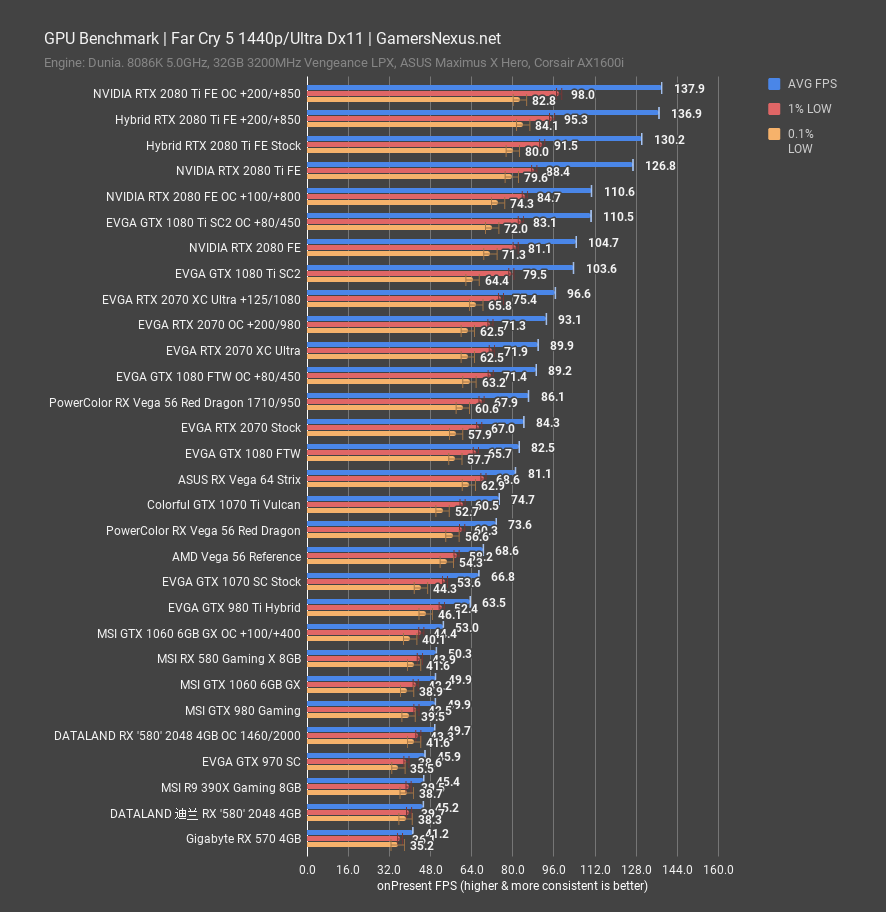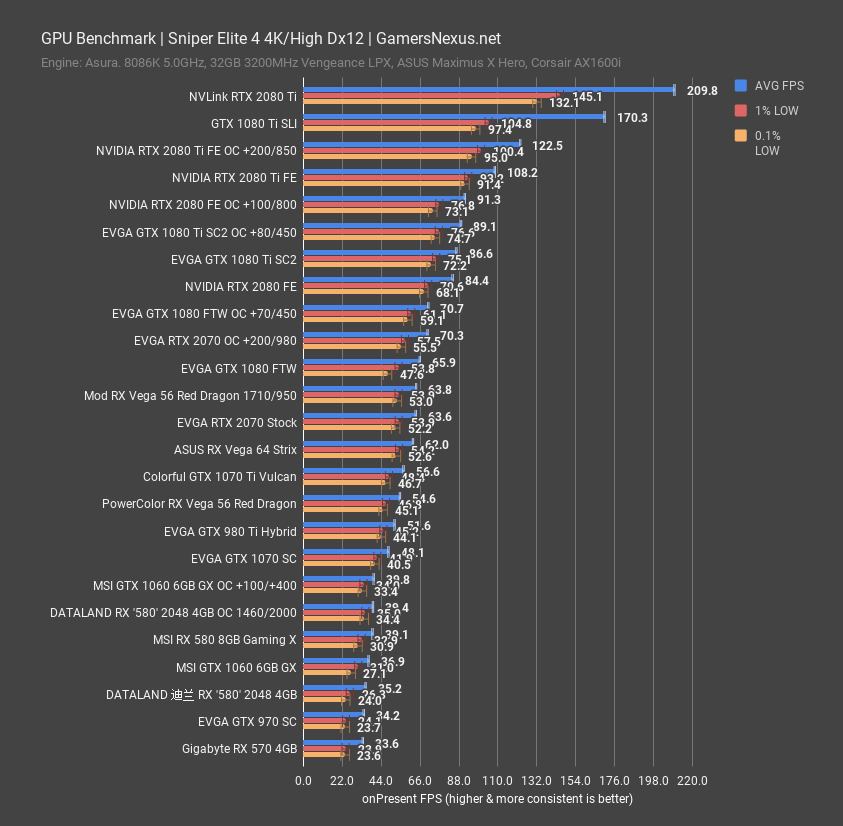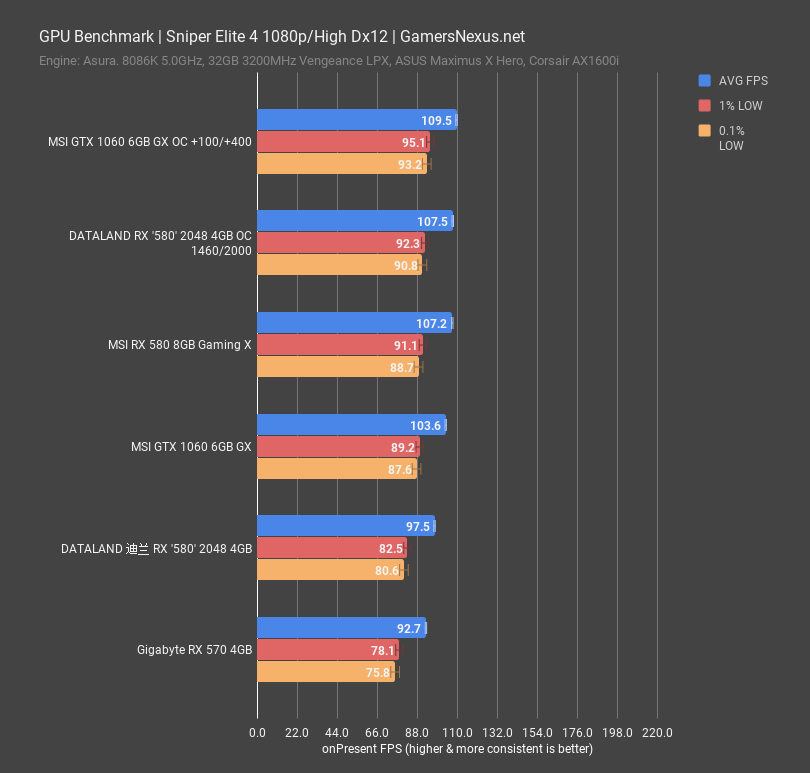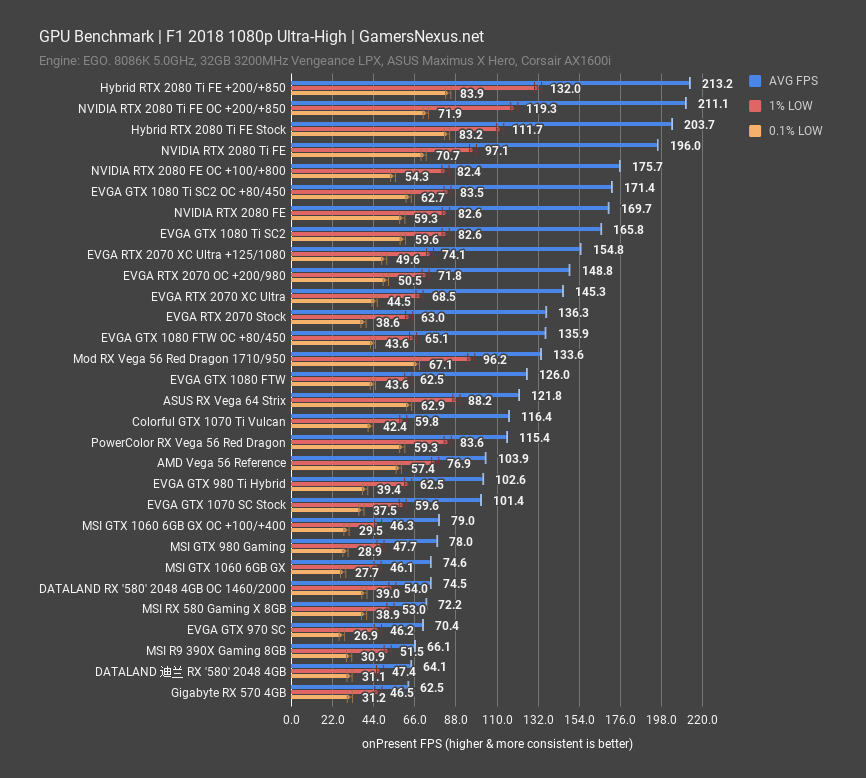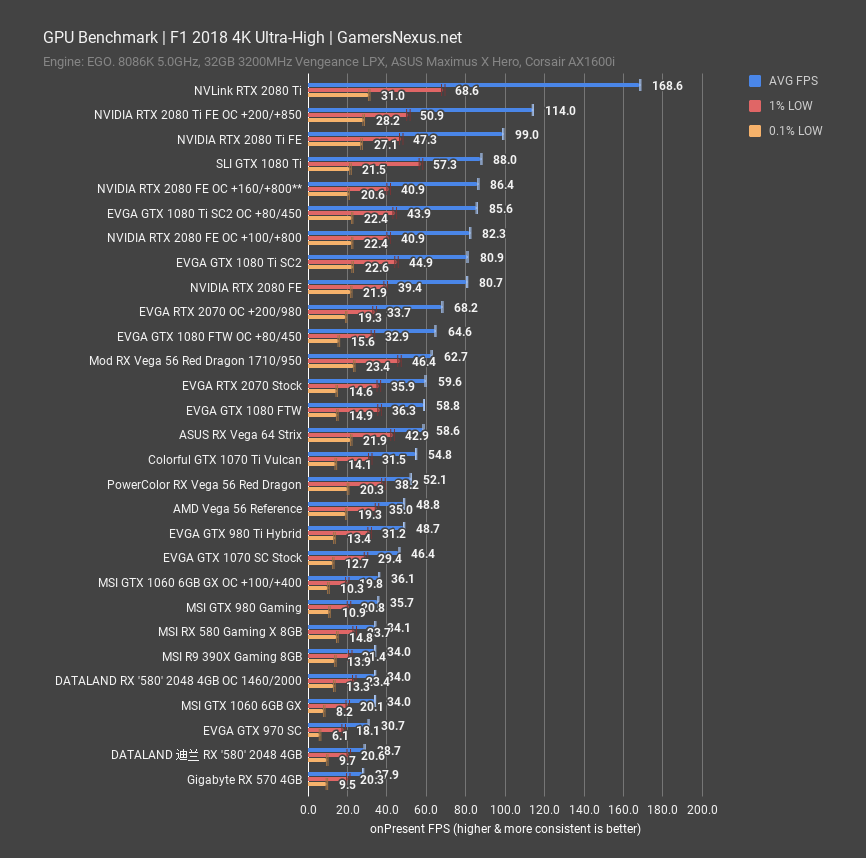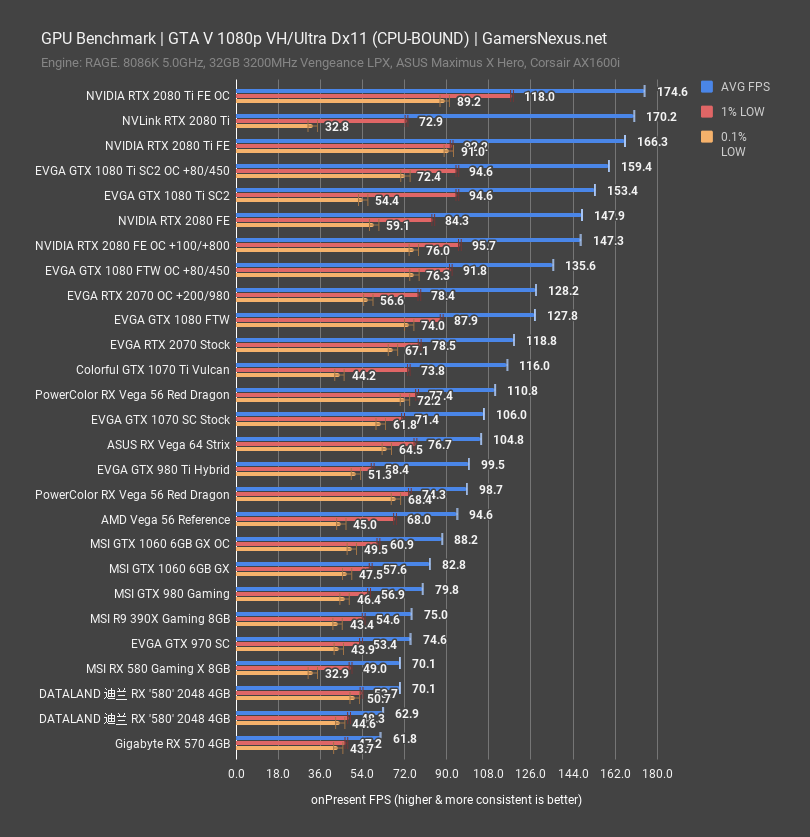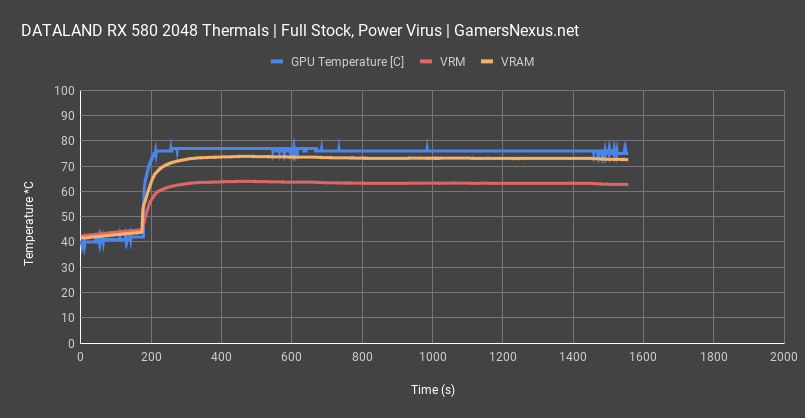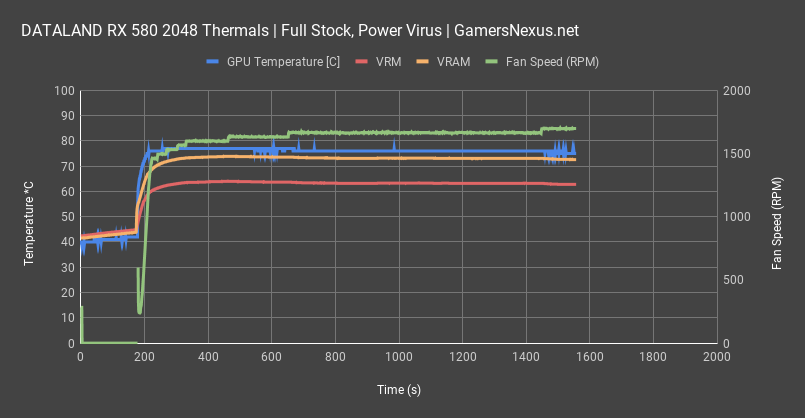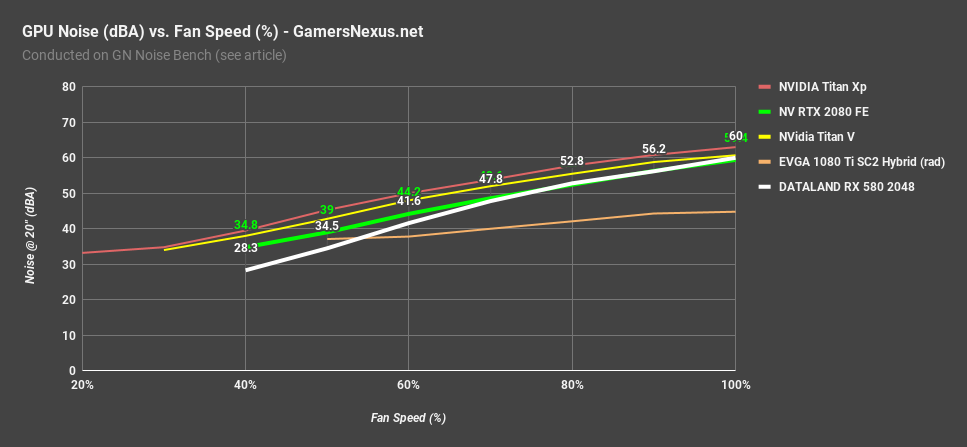AMD launched its RX 580 2048 silently in China a few months ago, and in doing so damaged its brand credibility by rebranding the RX 570 as an RX 580. The point of having those two, distinct names is that they represent different products. The RX 580 2048 has 2048 FPUs (or streaming processors), which happens to be exactly what the RX 570 has. The RX 580 is also a few MHz higher in clock, which is fully attainable with an overclocked RX 570. Working with GamersNexus contacts in Taiwan, who then worked with contacts in China, we managed to obtain this China-only product launch so we could take a closer look at why, exactly, AMD thinks an RX 570 Ti deserves the name “RX 580.”
Taking an existing product with a relatively good reputation and rebuilding it as a worse product isn’t new. Don’t get us wrong: The RX 570, which is what the RX 580 2048 is, is a reasonably good card, especially with its new prices of roughly $150 (Newegg) to $180 elsewhere. That said, an RX 580 2048 is, by definition, not an RX 580. That’s lying. It is an RX 570, or maybe an RX 575, if AMD thinks that a 40MHz clock difference deserves a new SKU. AMD is pulling the same deceitful trick that NVIDIA pulled with its GT 1030 DDR4 card. It’s disgraceful, misleading, and predatory of consumers who may otherwise not understand the significance of the suffix “2048.” If they’re looking for an RX 580, they’re still finding one – except it isn’t one, and to brand the RX 580 2048 as an RX 580 is disgraceful.
We have a separate video scheduled to hit our channel with a tear-down of the card, in case you’re curious about build quality. Today, we’re using the DATALAND RX 580 2048 as our vessel for testing AMD’s new GPU. Keep in mind that, for all our scorn toward the GPU, DATALAND is somewhat unfortunately the host. DATALAND didn’t make the GPU – they just put it on the PCB and under the cooler (which is actually not bad). It also appears that DATALAND (迪兰) works alongside TUL, the parent company to PowerColor.
We paid about $180 USD for this card, which puts it around where some RX 570s sell for (though others are available for ~$150). Keep in mind that pricing in China will be a bit higher than the US, on average.
Test Methodology
Testing methodology has completely changed from our last GPU reviews, which were probably for the GTX 1070 Ti series cards. Most notably, we have overhauled the host test bench and had updated with new games. Our games selection is a careful one: Time is finite, and having analyzed our previous testing methodologies, we identified shortcomings where we were ultimately wasting time by testing too many games that didn’t provide meaningfully different data from our other tested titles. In order to better optimize our time available and test “smarter” (rather than “more,” which was one of our previous goals), we have selected games based upon the following criteria:
- Game Engine: Most games run on the same group of popular engines. By choosing one game from each major engine (e.g. Unreal Engine), we can ensure that we are representing a wide sweep of games that just use the built-in engine-level optimizations
- API: We have chosen a select group of DirectX 11 and DirectX 12 API integrations, as these are the most prevalent at this time. We will include more Vulkan API testing as more games ship with Vulkan
- Popularity: Is it something people actually play?
- Longevity: Regardless of popularity, how long can we reasonably expect that a game will go without updates? Updating games can hurt comparative data from past tests, which impacts our ability to cross-compare new data and old, as old data may no longer be comparable post-patch
Game graphics settings are defined in their respective charts.
We are also testing most games at all three popular resolutions – at least, we are for the high-end. This includes 4K, 1440p, and 1080p, which allows us to determine GPU scalability across multiple monitor types. More importantly, this allows us to start pinpointing the reason for performance uplift, rather than just saying there is performance uplift. If we know that performance boosts harder at 4K than 1080p, we might be able to call this indicative of a ROPs advantage, for instance. Understanding why performance behaves the way it does is critical for future expansion of our own knowledge, and thus prepares our content for smarter analysis in the future.
For the test bench proper, we are now using the following components:
GPU Test Bench (Sponsored by Corsair)
Component | Courtesy of | |
CPU | GamersNexus | |
GPU | This is what we’re testing! | Often the company that makes the card, but sometimes us (see article) |
Motherboard | ASUS | |
RAM | Corsair | |
PSU | Corsair | |
Cooler | NZXT | |
SSD | Plextor 256-M7VC | GamersNexus |
Separately, for the initial RTX 20-series reviews, we are using 10-series board partner models instead of reference models. This is because we know that most of the market, for fact, is using board partner models, and we believe this to be the most realistically representative and relatable for our audience. We acknowledge that the differences between the RTX and GTX reference cards would be more pronounced than when comparing partner cards, but much of this is resultant of poor cooler and reference card solutions in the previous generation. It creates, in our eyes, an unrealistically strong appearance for incoming cards on dual-axial coolers, and does not help the vast majority of users who own board partner model 10-series cards.
Far Cry 5 – AMD RX 580 2048 vs. RX 580 & RX 570 Benchmark
Far Cry 5 uses the Dunia Engine by Ubisoft Montreal and gives us a look at what is typically a heavily GPU-bound workload with a lot of screen-space reflections, water rendering, and some draw distance stressors.
At 1080p, the very top-end of the chart becomes CPU-constrained, and so is invalid for comparison. The DATALAND RX 580 2048 is, fortunately, very, very far away from becoming CPU-bound. Stock, the DATALAND RX 580 2048 operates at 64FPS AVG, ranking it as marginally better – about 9% -- than the RX 570 4GB card. That’s entirely in the pre-overclock, as the real RX 580 Gaming X ends up 11% ahead, at 72FPS AVG. Overclocking the DATALAND card to 1460MHz core and 2000MHz memory gets it to 70FPS AVG, which is about tied with the real RX 580. This parallels how the RX 570 would behave – it can nearly match the stock 580 when overclocked. Lows scale expectedly with this title, so not much interesting to show there. That said, let’s get a frametime plot up on the screen to illustrate how the RX 570 4GB and RX 580 2048 4GB are basically the same card:
As a reminder, in these charts, lower is better, but more consistent is better than lower. The biggest issue here is that we want frame-to-frame render intervals to be consistent. This is a far more important chart than the FPS charts we normally show, as it shows the individual break-down over the period of the test. Nothing gets smoothed-out in averaging by using a frametime plot. As you can see, though, the RX 570 and RX 580 perform similarly in their baseline frame-to-frame interval.
At 1440p, the DATALAND RX 570 Ti 2048 ends up at 45FPS AVG, outperforming the RX 570 by 9-10%. This positions it as still notably worse than the stock RX 580 Gaming X, which maintains its 11% advantage. Overclocking the DATALAND card does get it to about 50FPS, to its credit, which ties things up until the RX 580 Gaming X gets an overclock. Either way, the most important thing here is that, again, an RX 580 2048 is functionally an overclocked RX 570. That’s what our 9-10% improvement shows.
RX 580 2048 4GB vs. RX 580 8GB, RX 570 - Sniper Elite 4
Sniper Elite 4 runs on the Asura engine and is one of the best-built games we test. Its DirectX 12 integration is ground-up and genuine – this is no wrapper – and it is also one of the few games that leverages asynchronous compute properly.
We primarily use this game in 4K, but we also ran additional 1080p tests for these mid-range cards. Let’s start with the 4K lineup to get the full picture, though. Treat this as a synthetic test while at 4K, primarily useful for illustrating scaling.
At these settings, the RX 570 4GB card ends up at about 34FPS AVG, roughly tied with the GTX 970. More importantly, our DATALAND RX 580 2048 ends up at about 35FPS AVG, plotting about a 5% improvement. Not much to work with, here. It’s just a rebranded 570 – go figure. When overclocked, the RX 580 2048 ends up at about 39FPS. That’s a bit ahead of the GTX 1060 6GB, but is only tied with the stock RX 580 8GB card, also at 39FPS AVG. Stock-to-stock, the real RX 580 maintains a lead over the RX 580 2048.
At 1080p, our chart is limited to just the most relevant cards: The RX 580 2048 ends up at 98FPS AVG, which is further ahead of the RX 570 than we’ve seen in other games; that said, it is about right for overclocking responsiveness in Sniper Elite 4, where overclocks drive performance in greater margins than in other games. The real RX 580 runs at 107FPS AVG, which is where the RX 580 2048 ends up when overclocked.
DATALAND RX 580 2048 Benchmark – F1 2018
F1 2018 uses the CodeMasters EGO engine. With this game, F1 2018 enables exceptionally high framerates and is almost entirely bound by the GPU, even at 1080p.
And at 1080p, we see that the DATALAND RX 580 2048 is definitely the bottleneck: It’s at about 64FPS AVG, which puts it as almost exactly the same performance as the stock Gigabyte RX 570 4GB card’s 63FPS AVG. Lows are also nearly identical and are within error margins. Overclocking the DATALAND card to 1460MHz core and 2000MHz memory gets it to 75FPS AVG, which is about tied with the GTX 1060 6GB and a bit ahead of the RX 580 Gaming X 8GB card. We are clearly not limited by the memory controller or memory capacity in this one.
At 1440p, the DATALAND RX 580 2048 ends up at about 49FPS AVG, which is again about where the RX 570 is. This thing is an RX 570. The fact that AMD calls it an RX 580 is completely unacceptable and predatory of consumers. The only distinction here is the stock clock speed.
Let’s move on.
RX 580 2048 Benchmark 2018 - GTA V
GTA V gives us a look at the aging-but-relevant RAGE engine, which primarily punishes systems by long view distances and draw distances for far-away objects. In this 1080p benchmark, the DATALAND RX 580 ends up at 63FPS stock, which is within error margins of the RX 570 4GB card. That makes sense, considering it is an RX 570 4GB card, just with a slightly higher clock. Overclocking it does afford a 70FPS AVG, ranking it alongside the MSI RX 580 Gaming X 8GB. Just for clarity, that’d be a real RX 580, not the 2048 model. Of course, if we were to overclock the real RX 580, it’d climb higher.
At 1440p, GTA V lands the DATALAND card at 43FPS AVG, which is within margin of error of the 42FPS AVG RX 570 4GB card. Again, because they’re the same thing. Overclocking the DATALAND unit to 1460MHz gets it to 48FPS AVG, which nearly ties the RX 580 8GB and is within error margins. That’s before overclocking the 580, which would push it higher still, naturally.
DATALAND RX 580 2048 Overclock Stepping
| DATALAND RX 580 2048 Overclock Stepping | TimeSpy Extreme Stress Test | GamersNexus.net | ||||||||||
| Peak Frequency | Core Offset | Core Voltage | Memory Frequency | Memory Offset | Power | GPU Only Draw | VDDC Power | Fan Speed | Active Temp | Pass/Fail |
| 1310 | 0 | 1.07 | 1750 | 0 | 100% | 122 | 90 | 1278 | 77 | P |
| 1310 | 0 | 1.07 | 1750 | 0 | 150% | 110 | 70 | 1170 | 79 | P |
| 1310 | 0 | 1.07 | 1750 | 0 | 150% | 110 | 85 | 3086 | 53 | P |
| 1380 | 70 | 1.18 | 1750 | 0 | 150% | 131 | 115 | 3086 | 58 | P |
| 1420 | 110 | 1.18 | 1750 | 0 | 150% | 150 | 117 | 3086 | 60 | P |
| 1460 | 150 | 1.18 | 1750 | 0 | 150% | 160 | 120 | 3086 | 61 | P |
| 1510 | 200 | 1.18 | 1750 | 0 | 150% | N/A | N/A | 3086 | N/A | F |
| Fail - Application Crash (Fans Ignore Rule & Spin to 0RPM) | ||||||||||
| 1490 | 180 | 1.18 | 1750 | 0 | 150% | 170 | 124 | 3086 | 63 | P |
| 1490 | 180 | 1.18 | 1950 | 200 | 150% | 174 | 133 | 3086 | 63 | P |
| 1490 | 180 | 1.18 | 2050 | 300 | 150% | 174 | 133 | 3086 | 63 | P |
| N/A | N/A | N/A | N/A | N/A | N/A | N/A | N/A | 2000 | 67 | F |
| Fail - Application Crash after reducing fan speed | ||||||||||
| Switch to FireStrike | ||||||||||
| 1460 | 150 | 1.18 | 2000 | 250 | 150% | 160 | 124 | 2200 | 74 | P |
For overclock stepping, the RX 580 2048 did about the same increments as you’d find on a decent RX 570. We stepped gradually until we hit 1490MHz core and 2050MHz memory stable, but that could only be held with 100% fan speeds (and in VRAM-intensive titles). When we reduced fan speed back down to 2000RPM from 3086RPM, it nearly instantly lost stability. We ultimately settled on an overclock of 1460MHz core and 2000MHz memory, which was selected primarily because it held stable in all gaming applications tested. A slightly higher overclock could be held in TimeSpy, but that’s because the load shifts to the memory rather than the core.
Most importantly, we saw power consumption as upwards of 174W for the GPU alone and 133W VDDC. That’s a lot of power for not a lot of performance gained.
DATALAND RX 580 2048 Thermals
For our standard thermal testing, a full stock test, including the stock fan profile, found the GPU to operate at about 76 degrees Celsius steady-state, with the selected MOSFET at 64 degrees and the memory at 74 degrees. This is all within spec, so there’s nothing glaringly wrong with the card here. The FETs and VRAM are perfectly within reason, and DATALAND built its cooler to keep the card within spec. As for the fan speed, we can switch over to a new chart for that now:
Fan speed ramped to 1700RPM over the course of testing, putting it at about 55% fan speed and roughly 40dBA noise levels. That’s not terrible, it’s just that the type of noise is higher-pitched than in a lot of other cards we review.
Noise Comparison – RX 580 2048 DATALAND
This card runs loud when it’s really put to work, particularly when sustaining any kind of meaningful overclock. For the noise scale, we’re at 60dBA when running 100% fan speeds – or about 3100RPM – falling to 56dBA at 90%, 53dBA at 80%, 48dBA at 70%, and about 40dBA at 58% fan speeds, or 1790RPM. We found we were often running at around 2000-2300RPM to keep thermals within reason for overclocking, which would put you at around 70-74% fan speeds and about 47.8-50dBA noise levels. The DATALAND card runs at almost exactly the same noise levels at the top-end of the curve as a reference NVIDIA card, which isn’t a good thing, although it is quieter at the low-end. It’s also less effective. These bearings screech as they heat up, which is some of what you’re seeing here.
Conclusion
It was fun to work with a new manufacturer’s card. We’d never even heard of DATALAND before this, and it seems that it’s a China-specific brand. The card is interesting and its marketing appeals to different aspects than US marketing does, which made this refreshing to work with.
But that’s the video card, which is expressly different from the GPU.
The GPU is an RX 570. AMD makes the RX 575 – or RX 580 2048, by their naming – and AMD deserves scrutiny for a practice which is predatory and misleading. This product is an RX 570. Even if the pricing is favorable for the RX 580 2048, even if it’s not an objectively bad purchase (it isn’t), it is still disingenuous to call the product an RX 580. All other points are moot. Just like it is disingenuous for NVIDIA to sell a GT 1030 with DDR4 while still keeping the same base name, it is equally disingenuous for AMD to sell an RX 580 with 2048 SPs while keeping the same base name.
Editorial, Testing: Steve Burke
Video: Andrew Coleman, Keegan Gallick
